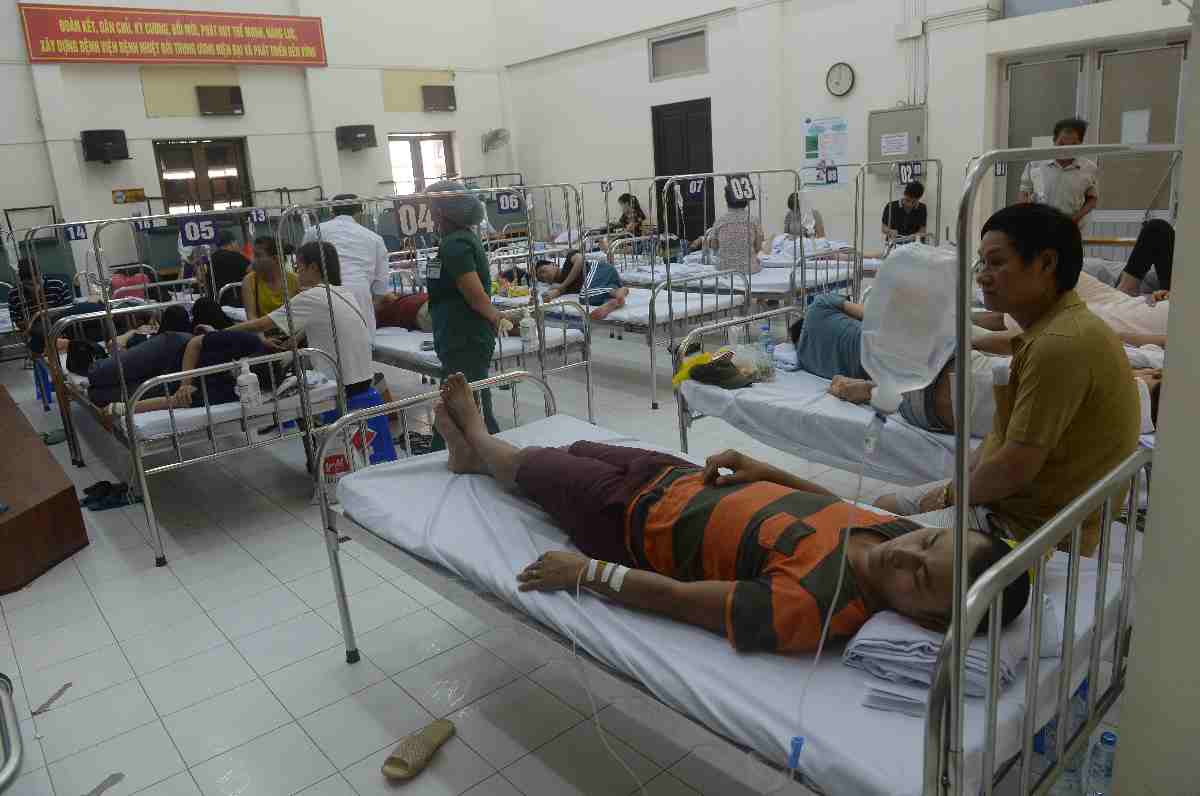Virtually every country worldwide has committed to achieving universal health coverage (UHC) by 2030, as part of the United Nations (UN) Sustainable Development Goals (SDGs). But some countries are progressing much faster than others in delivering equitable access not only to health services, but also to affordable medicines and vaccines. Among those leading the pack is Vietnam.
Today, 87.7 percent of Vietnam’s population – or 83.6 million people – are covered by health insurance. According to the latest Global Monitoring Report on UHC, published jointly by the World Health Organization (WHO) and the World Bank, 97 percent of Vietnamese children now receive standard immunisations, compared to 95 percent of children in the United States (US). Since 1990, the country’s maternal mortality rate has fallen by 75 percent.
Vietnam has managed to reach such impressive milestones ahead of schedule, despite having an average per capita income of just US$2,342 as of 2017. The key to its success is not the scale of investment in health care, which amounts to a modest US$142 per person annually (including both public funding and out-of-pocket expenses), but rather how the government uses its resources, including the country’s intellectual capital.
Vietnam’s strategic approach can be seen in its Ministry of Health’s Direction of Healthcare Activities scheme, which requires health facilities at the central and provincial levels of government administration to help build up the capacity of district and community facilities. A key objective of this scheme is to shift more of the burden of delivering medical services from higher-level hospitals onto lower-level primary health-care facilities.
Given a long history of deep disparities in health outcomes between urban and rural areas, Vietnamese still often try to bypass their local health-care centres in favour of major hospitals in urban centres. This creates inefficiencies in the health system and increases out-of-pocket costs for patients and their families, without guaranteeing the best care.
So, beyond ensuring that community health facilities can offer affordable, quality care, there is a need to change public perceptions. Families need to trust that they can get a dependable diagnosis of malaria, chronic obstructive pulmonary disease, or diabetes locally, as well as necessary medications and other treatments.
To this end, health facilities must strengthen their relationships with local communities, above all by routinely providing a level of service that satisfies patients. Such relationships will help to advance another health-improving, cost-saving imperative: local health workers must be able to educate their communities to maintain health and avoid illness. Success will require good working conditions and access to the ongoing training and management support that are critical to job satisfaction.
Vietnam’s government recognises that, to implement its health-care strategy effectively, it needs help. It has established a new Working Group for Primary Healthcare Transformation, led by the Vietnamese Ministry of Health and including diverse actors from the public, non-profit, and private sectors. The group’s founding partners are the World Economic Forum (WEF), Harvard Medical School, and Novartis.
The working group aims to strengthen existing primary-care demonstration projects in 30 Vietnamese provinces and apply the lessons learned to developing holistic solutions that can be replicated and scaled up. It will also place a high priority on rigorous measurement and evaluation of outputs, from the quality of community-level health services to the cost-effectiveness of primary health care.
Each partner is invited to contribute capabilities, resources, and knowhow to this endeavour. For example, Harvard Medical School brings world-class expertise in the organisational management of primary health-care teams. National partners bring, among other things, a deep understanding of the local context, which is essential to developing and implementing sustainable solutions.
For its part, Novartis offers an understanding of how to deploy digital technology at large scale, engage rural communities in health education, and expand education programs for health-care practitioners in rural communities. In fact, Novartis has already made similar contributions through another successful public-private partnership in Vietnam, entitled Cùng Sông Khòe (CSK).
Carried out in partnership with Vietnam’s government, CSK has been delivering a range of services to underserved rural communities in Vietnam since 2012. That initiative has expanded both care for common medical issues like diabetes, hypertension, and respiratory conditions, and patient health education and continuing medical education for health professionals. Since 2012, CSK has reached more than 570,000 people, mainly adults, across 16 provinces.
Vietnam has significant challenges ahead. It will need to grapple with behavioural and environmental factors underlying poor health and disease, especially high rates of smoking among males, high rates of alcohol consumption, and air pollution. The country also has one of the world’s most rapidly aging populations.
Moreover, important health-care reforms must still be undertaken to improve outcomes. For example, the government should create incentives for doctors to be more selective in referring patients to higher-level hospitals and to send more patients to local primary-health-care centres. Nonetheless, Vietnam’s progress toward UHC has been remarkable, thanks partly to the government’s embrace of strategic public-private partnerships. For countries that have struggled to move forward, this model – and approaches from other high performers in the race for UHC, such as Indonesia, Rwanda, and Thailand – may be worth embracing.
Jörg Reinhardt is Chairman of the Board of Directors for Novartis.
